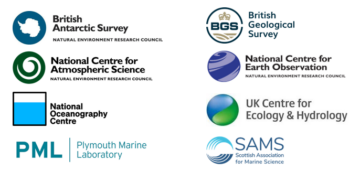A community review of the role of uncrewed aerial systems in the decarbonisation strategy of NERC aerial activities.

This community scoping report is part of NERC’s response to the challenge of achieving Net Zero by 2040 while maintaining and developing its airborne science capabilities. These capabilities are essential to inform decision-makers with relevant and reliable environmental evidence and to drive forward the frontiers of science. The response includes, but is not limited to expanding, strengthening and developing capability and capacity in Uncrewed Aerial Systems (UASs).
This report, based on engagement with key stakeholders including the NERC UAS user community, and co-authored by representatives from eight NERC Centres and Collaborating Institutes, articulates the current state-of-play for UASs within environmental research as it is adopted by NERC Centres and Collaborating Institutes and in different environmental disciplines. It outlines the vision for expanding UAS usage within environmental scientific research, highlights barriers and opportunities regarding regulation, technology (including, platforms, sensors and integration) and data flows, and provides recommendations to inform future NERC perspectives on the use of UASs for environmental research. These aim to help prioritise opportunities to deliver a programme of low-carbon UASs and sensor capability that can be linked to the NERC carbon pathway to Net Zero by 2040.
To overcome key barriers, the report makes the following recommendations:
1. To overcome regulatory barriers
a) Nominate a single NERC-funded point of contact with the Civil Aviation Authority (CAA): An expert from one of the NERC Centres and Collaborating Institutes acting as a coordinating officer, proactively building a relationship and managing requests to minimise duplication of effort.
b) Establish and maintain a central documentation repository and FAQ database. It is envisaged that the repository would include, but not be restricted to, regulatory paperwork, central operations manuals/standard operating procedures (SOP), predefined risk assessment and templates, links to information sources, a central log of incidents and outcomes lessons learned (evidence of building a culture of safety and trust with CAA) and a central list of existing equipment and pilots.
2. To build capacity and capability
Develop one or more geographically accessible or discipline-focused CAA-approved training centre(s) and programme(s).
3. To encourage the most fruitful technology development and integration
Work towards cross-council leveraging of expertise to facilitate the rapid development of compatible sensors and platforms.
4. To strengthen trust in the veracity of measurements
Develop and adopt proven, transparent and if applicable internationally recognised best practices for calibration, operations and data processing.
5. To facilitate data uptake by third-party-users
a) Develop and adopt standard file formats, aligned with internationally recognised best practices, and resource data centres appropriately to facilitate the development of user and provider tools for enhanced useability and inclusion.
b) Integrate UAS data sources into planning for Digital Research Infrastructure.
Community report authors
Philip Anderson (Scottish Association for Marine Science), Luke Bateson (British Geological Survey), Barbara Brooks (National Centre for Atmospheric Science), Richard Dale (Scottish Association for Marine Science), Nick Everard (UK Centre For Hydrology and Ecology), Charlotte Francoz (National Oceanography Centre), Charles George (UK Centre For Hydrology and Ecology), France Gerard (UK Centre For Hydrology and Ecology), Tom Jordan (British Antarctic Survey), Zixia Liu (National Centre for Earth Observation), Aser Mata (Plymouth Marine Laboratories), Hugo Ricketts (National Centre for Atmospheric Science), Carl Robinson (British Antarctic Survey), Pilvi Saarikoski (British Antarctic Survey), Beatrix Schlarb-Ridley (British Antarctic Survey), Kay Smith (British Geological Survey), James Strong (National Oceanography Centre), Martin Wooster (National Centre for Earth Observation)